 nominate Lesser Black-backed Gull (L. f. fuscus)
nominate Lesser Black-backed Gull (L. f. fuscus)
(last update:
Amir Ben Dov (Israel)
Hannu Koskinen (Finland)
Mars Muusse (the Netherlands)
fuscus 1cy July
fuscus 1cy Aug
fuscus 1cy Sept
fuscus 1cy Oct
fuscus 1cy Nov
fuscus 1cy Dec
fuscus 2cy Jan
fuscus 2cy Feb
fuscus 2cy March
fuscus 2cy April
fuscus 2cy May
fuscus 2cy June
fuscus 2cy July
fuscus 2cy Aug
fuscus 2cy Sept
fuscus 2cy Oct
fuscus 2cy Nov
fuscus 2cy Dec
fuscus 3cy Jan
fuscus 3cy Feb
fuscus 3cy March
fuscus 3cy April
fuscus 3cy May
fuscus 3cy June
fuscus 3cy July
fuscus 3cy August
fuscus 3cy Sept
fuscus 3cy October
fuscus 3cy Nov
fuscus 3cy Dec
fuscus 4cy Jan
fuscus 4cy Feb
fuscus 4cy March
fuscus 4cy April
fuscus 4cy May
fuscus 4cy June
fuscus 4cy July
fuscus 4cy Aug
fuscus 4cy Sept
fuscus 4cy Oct
fuscus 4cy Nov
fuscus 4cy Dec
fuscus ad Jan
fuscus ad Feb
fuscus ad March
fuscus ad April
fuscus ad May
fuscus ad June
fuscus ad July
fuscus ad Aug
fuscus unringed Aug
fuscus ad Sept
fuscus ad Oct
fuscus ad Nov
fuscus ad Dec
Larus fuscus fuscus NOS 4248181, Tampere, Finland (61.33N 24.59E). Images: Hannu Koskinen & Markkhu Kangasniemi.
Below 2006: 2cy Baltic Gull from Norway in spring. NOS 4248181 is from Nordland, C Norway (65.19 N, 11.37 E), where pure fuscus used to breed. This individual is much fuscus-like in build.
More information about migration strategies in Norwegian fuscus and the ringing programme in the three northern counties of Norway: Nordland, Troms and Finnmark, can be found here: The summary for juveniles can be found in the fuscus 1cy October section, the summary for adults can be found in the fuscus adult October section.
Morten Helberg, Geir Systad, Ingve Birkeland, Nils Lorentzen & Jan Bustnes published an article about this research in Ardea 97, 2009, titled: Migration patterns of adult and juvenile Lesser Black-backed Gulls Larus fuscus from northern Norway. The complete PDF can be found HERE.
On arrival in Finland, it showed several renewed rectrices; two pairs still are juvenile. It has replaced the outer secondaries (S1); in the left wing P1 and in the right wing S4 has also been renewed. The remaining secondaries and primaries are retained juvenile feathers. Most of the wing coverts have been replaced in winter; only some lesser coverts in the carpal edge are still juvenile. This is a slow-moulting individual: by July it has dropped the upper tertials and some lesser and median coverts are growing. One month later it has renewed the upper tertials but moult in the greater coverts is progressing very slowly. In the remiges it has only moulted P1-4 (P5 growing) and a few outer secondaries. P7-10 in the left wing and P8-10 in the right wing, as well as the majority of the secondaries are still juvenile. This individual has made its second journey south still with many juvenile flight feathers. Finally note the grey tone of the upper parts in different light.
Below: 2cy on May 25 2006. Hannu Koskinen. More pictures here.
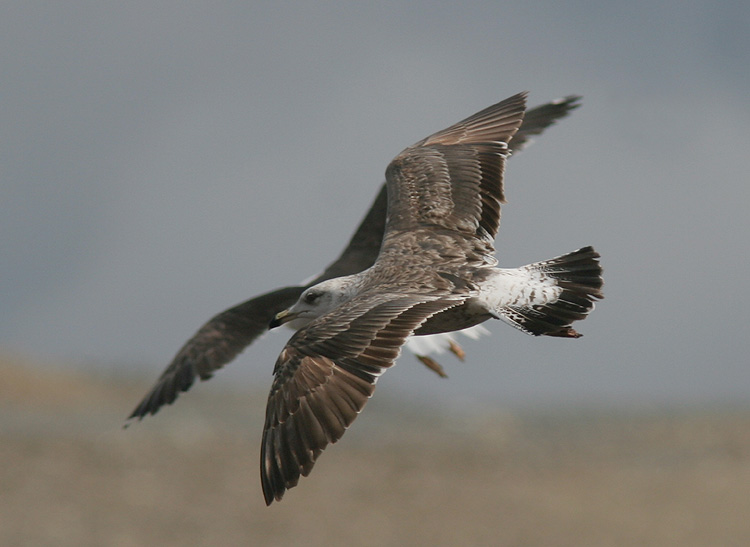

Below: May 28 2006. Hannu Koskinen.
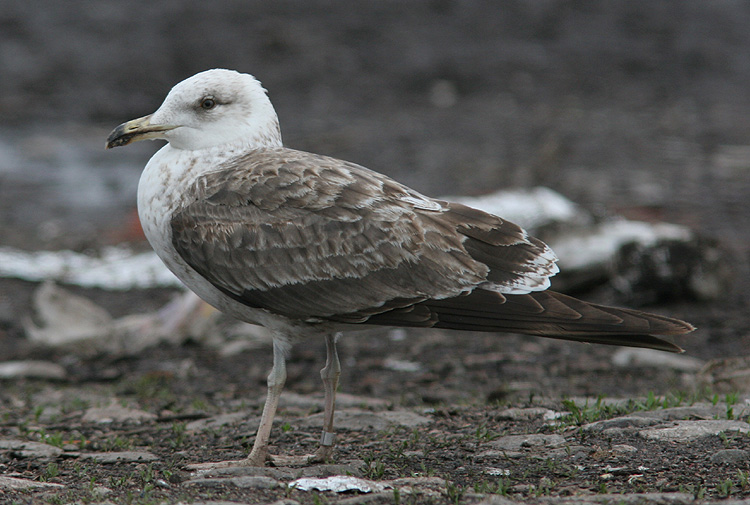
Below: July 15 2006. Hannu Koskinen.
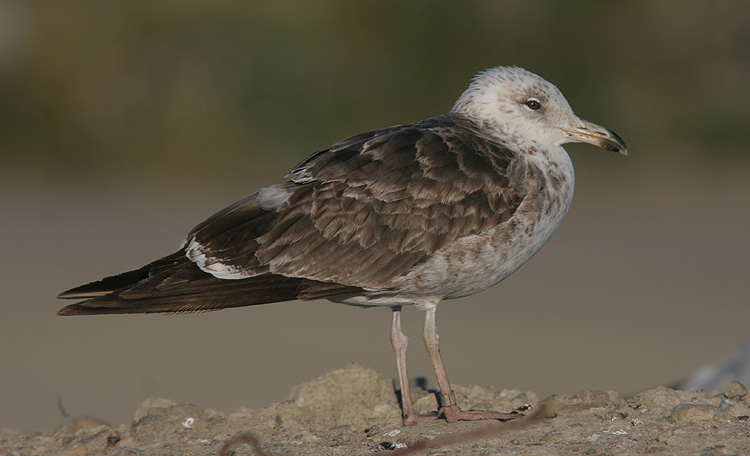
Below: August 08 2006. Hannu Koskinen.


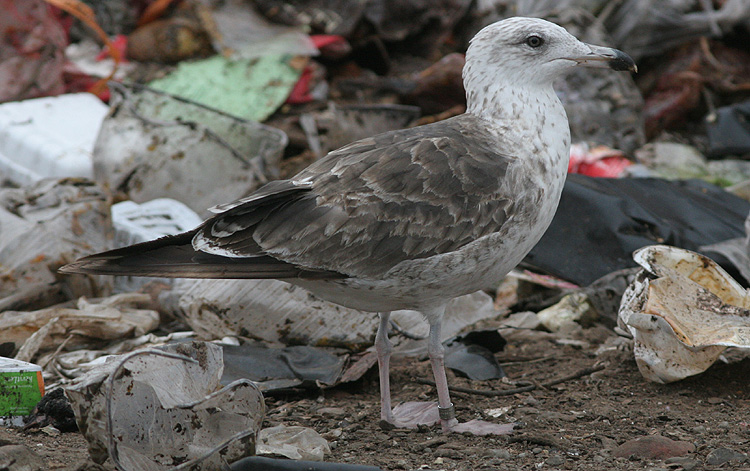


Below: 3cy on June 27 2007. Markkhu Kangasniemi.
Outer three primaries brown and no mirror on P10, as typical in 2nd gen feathers. Inner primaries replaced for 3rd gen feathers up to P7. Central secondaries probably 2nd gen as well. NOS 4248181 was already slow in 2cy, and now in 3cy it still remains a much 'immature' plumage compared to other 3cy fuscus, with many patterned, bleached and worn wing-coverts and relatively much black in the tail. Compare to NOS 4248114, also retarded 3cy fuscus at Tampere.
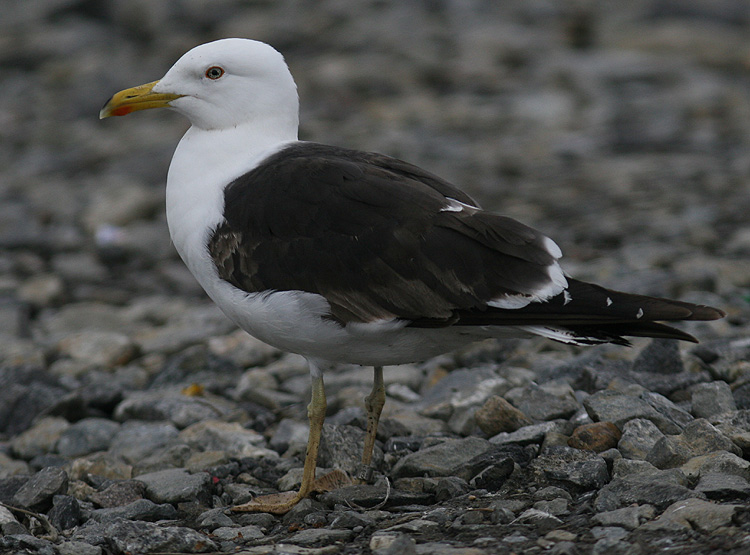
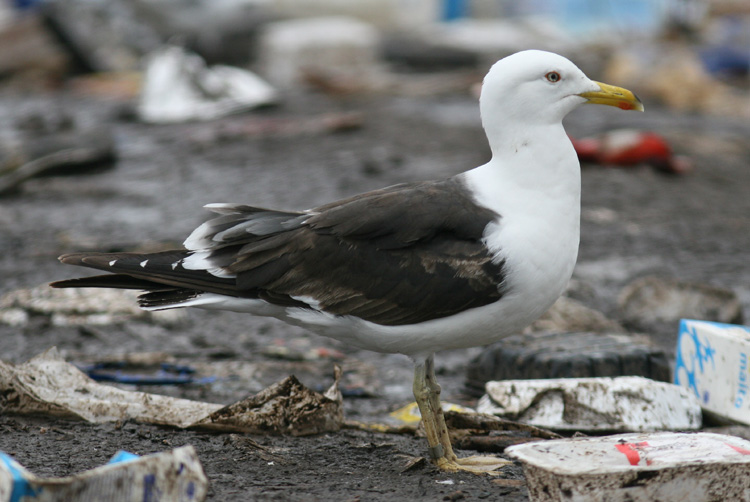
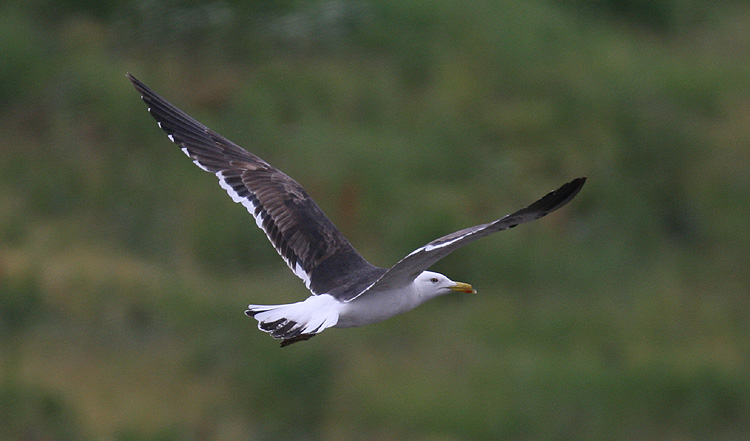

Below: 5cy on May 10 2009. Hannu Koskinen.
Finally, a splendid adult!
